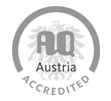Andreas Zins

Short Bio
Andreas H. Zins holds the position of a Full Professor of Tourism Management. Dr. Zins lectures entrepreneurship, marketing, tourism marketing, modelling of consumer and travel behaviour. His research interests are: consumer behavior, marketing research, social impacts, computer assisted and web-based interviewing, theme parks and related leisure attractions. Books on strategic management for tourism organisations (1993), tourism expenditures (1996, 1999), all-inclusive tourism products (2001) and on an integrated framework for evaluating customer presence services (2002) appeared in German language. He contributed 27 book chapters and is responsible for more than 180 publications in total. Articles on behavioural and psychographic issues of tourism are published in the Journal of Marketing Management, Journal of Business Research, Journal of Travel Research, Tourism Analysis, Journal of Travel and Tourism Marketing, International Journal of Services Industry Management, and the Journal of Information Technology and Tourism. Currently he is editor-in-chief of the International Journal of Culture, Tourism and Hospitality Research.
Past and current research project
- Burgenland North: impulses for a sustaining development of year-round gastronomy and accommodation supplies 2015 - 2017
- Evaluation of culinary initiative in Austria 2007 - 2013
- CITOUREP: Vienna as international Tourism Destination 2013
- LOY-Net: Landscape of the Year - Network 2010
- Revision and Relaunch of the tourism vision 2015 for Burgenland
- ECM:European City Tourism Report
- DieToRecs: Intelligent Recommendation for Tourist Destination Decision Making
My main research topics, methods and approaches condensed in a common word cloud in two dimensions
 Research word cloud - Andreas H. Zins
Research word cloud - Andreas H. Zins
PhD program
- Online Data Collection
- Advances in Cosumer Behavior Theory
MBA program
- Competitive Analysis and Strategy
- Identifying Market Segments in Tourism
- Consumer Behavior and Psychology in Tourism and Leisure II
Master program
- Tourism Business Project
Bachelor program
- Business Administration - Introduction into Business
- Market Simulation Game
- Benchmarking and Balanced Scorecard
- Entrepreneurship
- Marketing Research and Consumer Behavior
- Marketing Research Project




